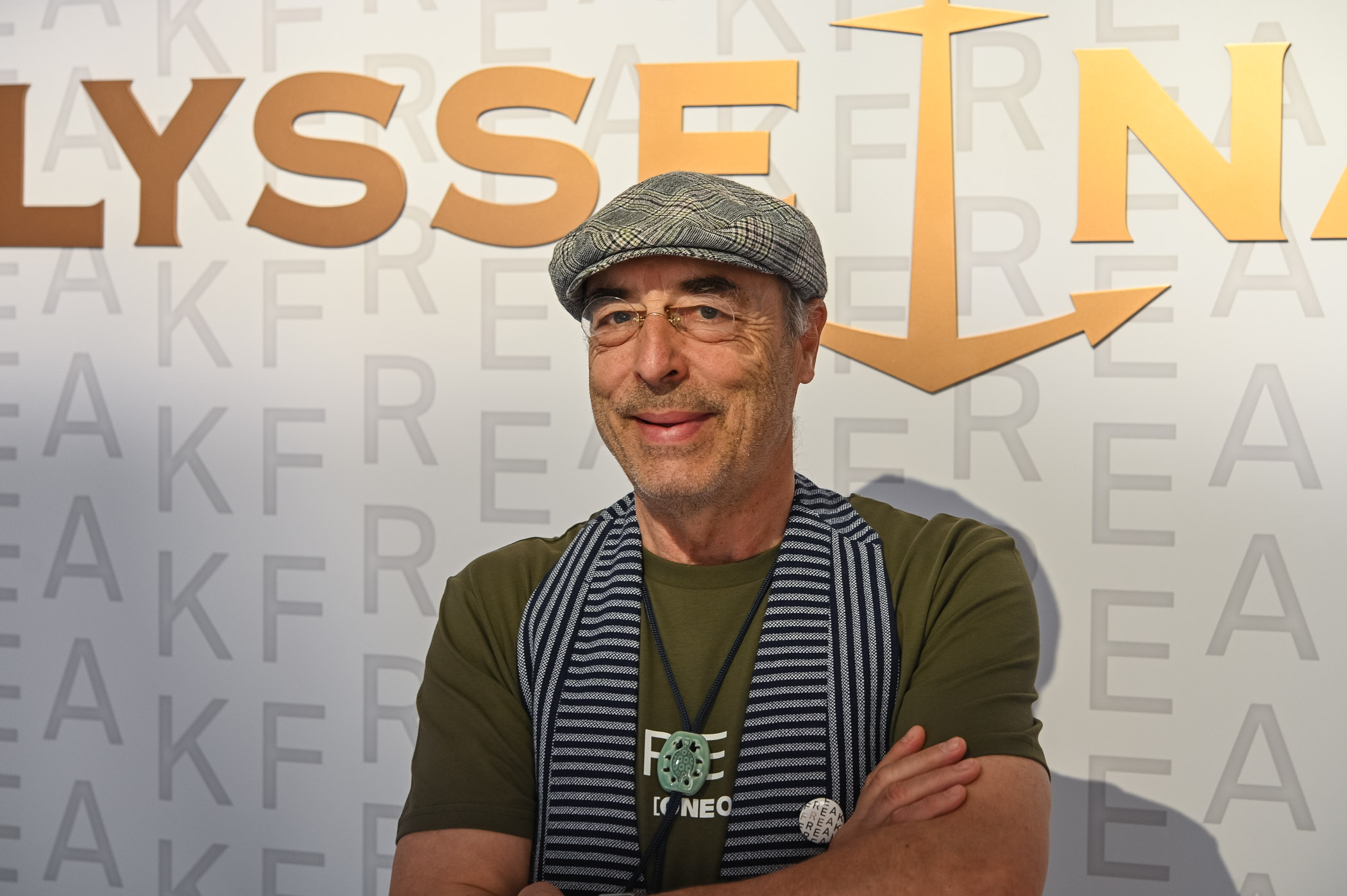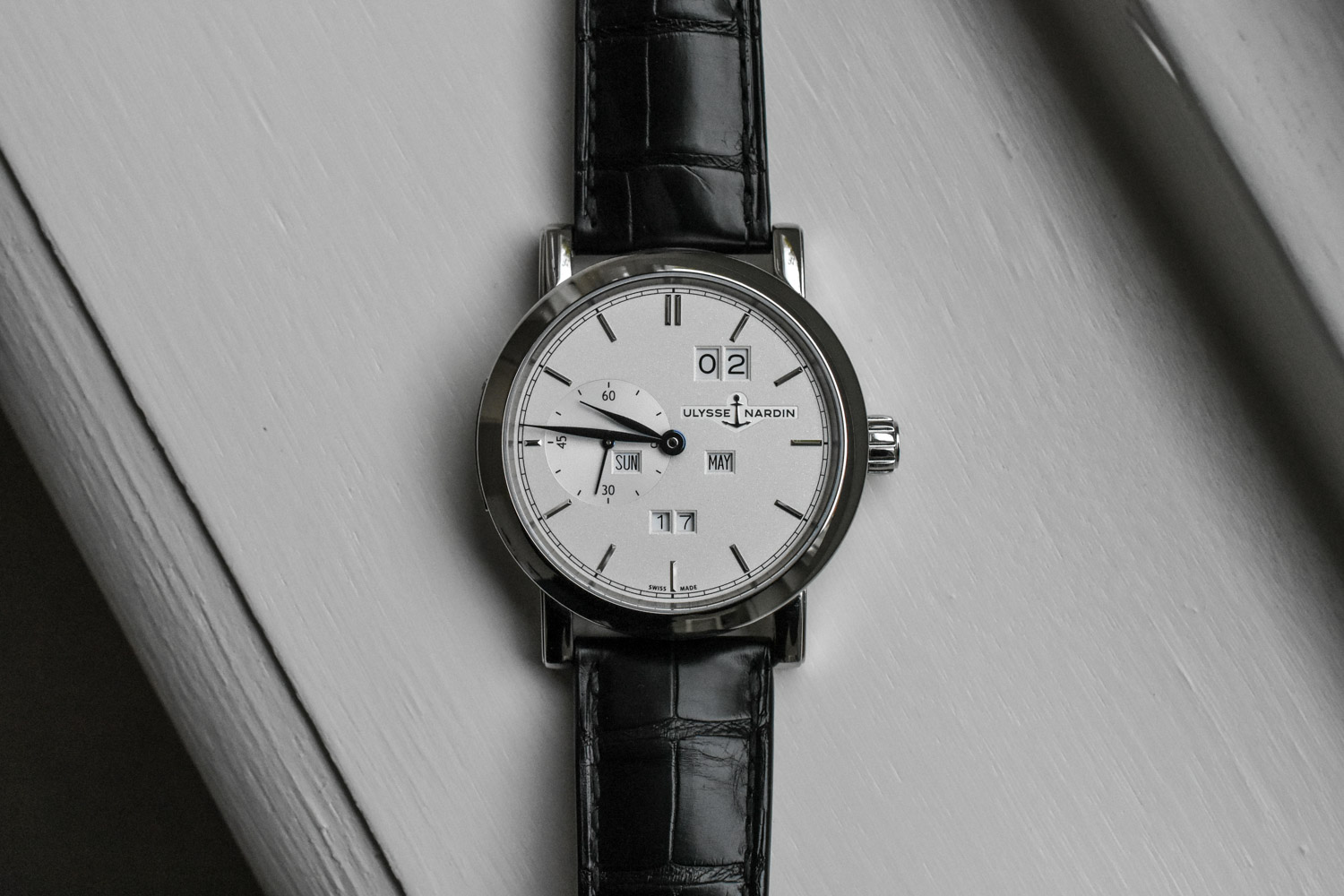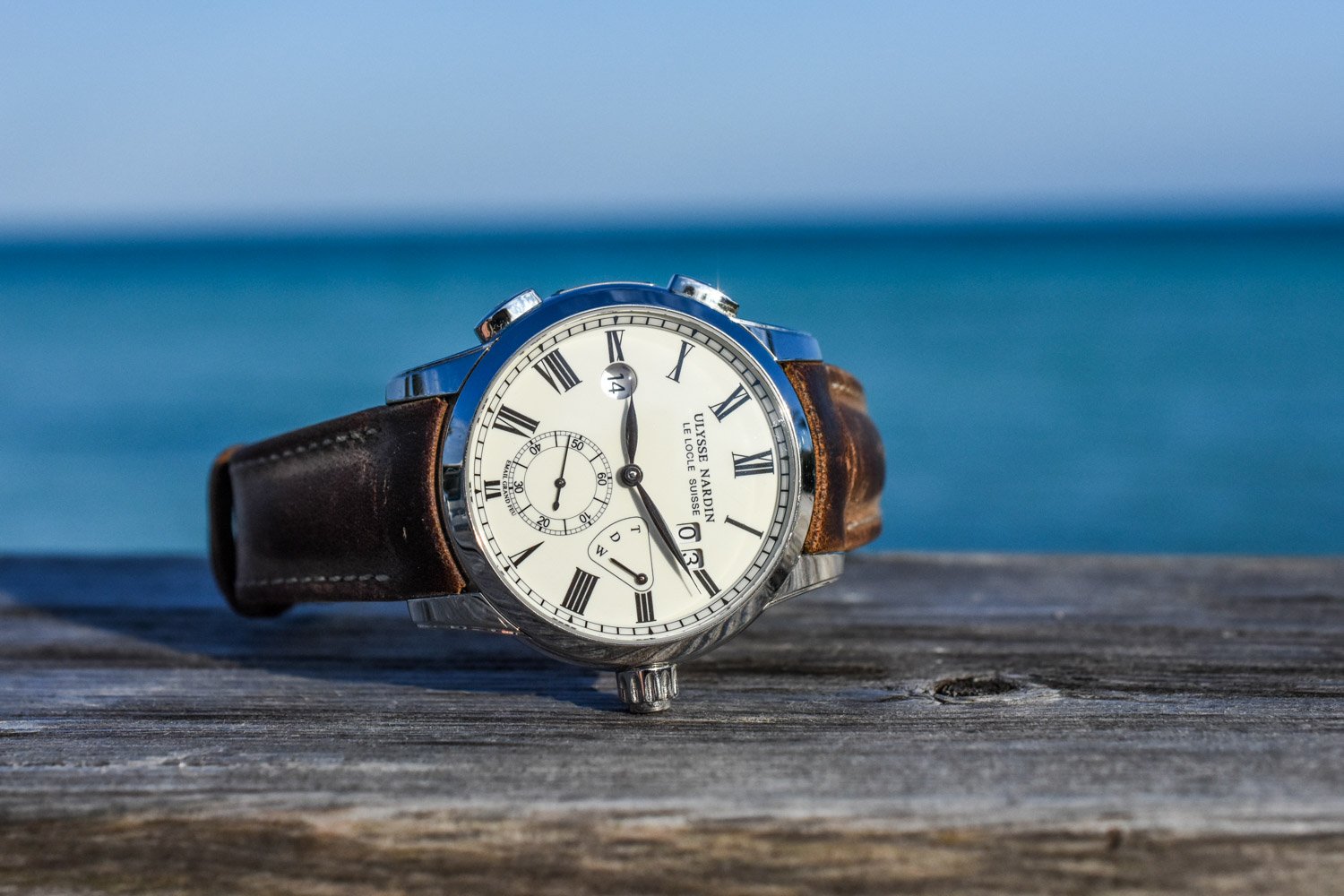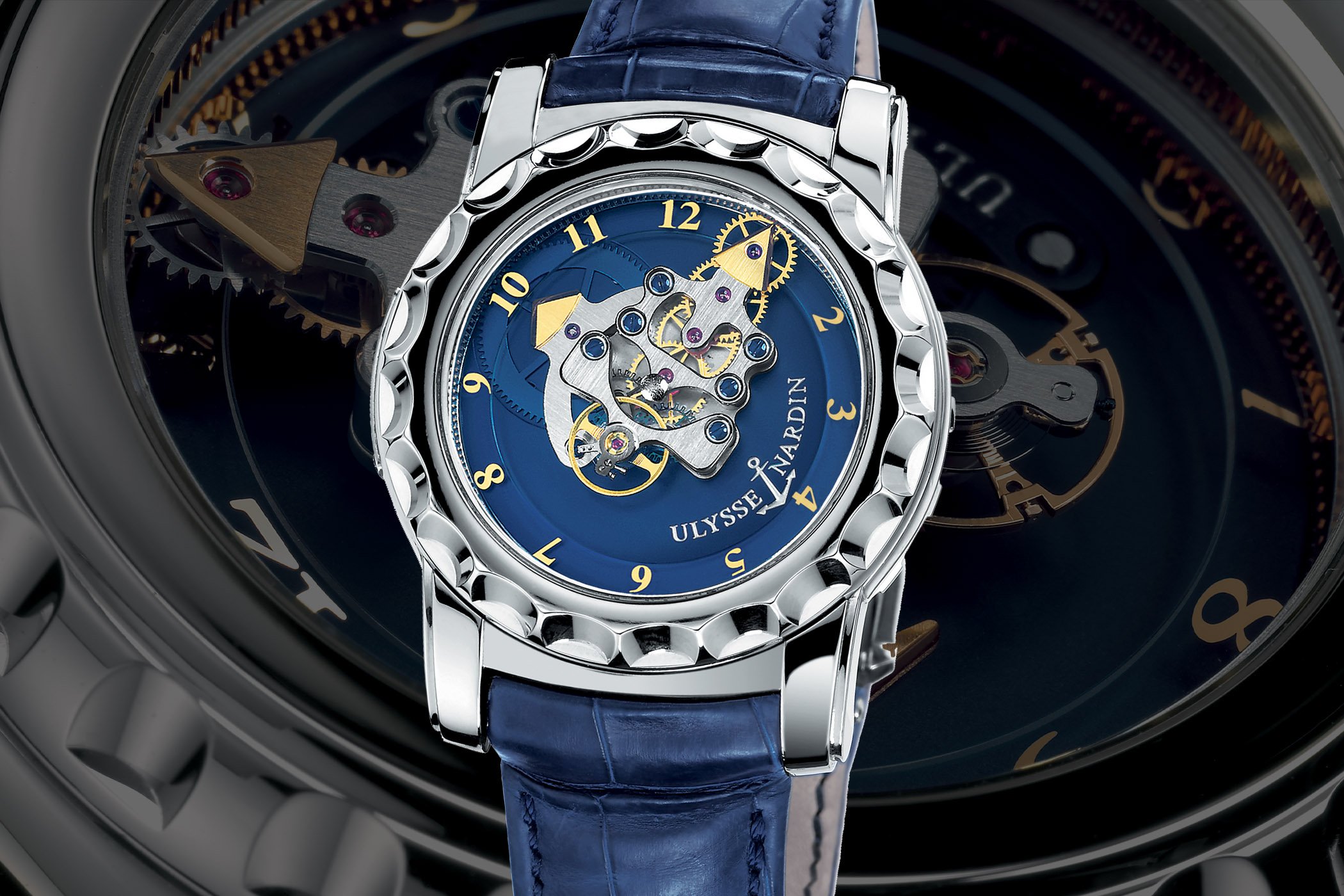An Encounter with Wizard Watchmaker Ludwig Oechslin, the Creator of the Ulysse Nardin Freak
Talking to the genius mind who, among other things, helped shape Ulysse Nardin as we know it today.

Historian, archaeologist, mathematician, philosopher and watchmaker, Ludwig Oechslin is the perfect example of a polymath whose knowledge across different disciplines fuels his innovation and creativity. In the 1980s, his encounter with Rolf W. Schnyder turned Ulysse Nardin into one of the most innovative watch brands around. The presentation of a new Freak at Dubai Watch Week 2023 gave us the perfect opportunity to sit down with this wizard watchmaker.
Xavier Markl, MONOCHROME – What is your first horological memory, and how did you get hooked on watchmaking?
Ludwig Oechslin – When I was a kid at boarding school, the school bell used to ring every hour of the day. When I went to university, there were no more bells to let you know that a class was starting, and I figured I needed a watch to tell the time. But I was not a wristwatch fan. So, I started looking for a pocket watch. The first watch that I saw and wanted was a repeater. But it was out of my reach. I bought a less expensive one, and this is how it all started.
I reckoned that if I were not successful in my studies, I’d have to think of some other career to make a living. I figured I could be a watchmaker or a goldsmith, but I had to find a master to teach me the trade. So, I went to work as an apprentice with Jörg Spöring. I graduated in Latin, archaeology, Roman and Greek history but learnt watchmaking with Jörg Spöring.
In the 1980s, your encounter with Rolf W. Schnyder turned the traditional Ulysse Nardin manufacture into one of the most innovative. How was the connection ignited? How was it working together?
With Jörg Spöring, I started crafting astronomical clocks, including one with an Astrolabium. When Rolf Schnyder acquired Ulysse Nardin, he started travelling around Switzerland, meeting people to help him revive the brand. He met Jörg Spöring to find out if he could make a repeater wristwatch. Then he saw the Astrolabium and inquired if this could be miniaturized into a wristwatch. Jörg Spöring answered that he had to check with his apprentice who had made that clock.

After meeting Rolf Schnyder, I was not convinced that this complication could be incorporated into a wristwatch; it would be difficult to read in that format. I thought we should change the approach and that we should create a representation of the sky from a fixed position. I made all the calculations. The Astrolabium Galileo Galilei was so precise that it only required a correction of just one day in 144,000 years! This was the beginning. Then, there was the idea to create companions for this wristwatch, which materialized in the Planetarium and the Tellurium. This is how the Ulysse Nardin Trilogy of Time came to life.

How did you make the calculations?
I had to make all the calculations from scratch. These were based on prime numbers, using a big book and a calculator. There was no CAD at the time.
What are the milestones of that Ulysse Nardin period?
Well, as said, I started the Trilogy of Time and then proposed the Perpetual Calendar (Editor’s Note: the first that could be adjusted both backwards and forward). The idea of the GMT +/- was proposed by a friend of Rolf Schnyder, but I had to find the technical solution (Editor’s Note: the “+” and “-” of the GMT± correspond to the two push-pieces used to instantly change the time zone of the hour hand, while the “reference time” aperture at 9 o’clock continually displays the home time).


Then I proposed the Sonata with a 24-hour alarm function with minute precision, followed by the Moonstruck, a watch with world time and a graphic and highly accurate representation of the Moon’s waxing and waning.
And, of course, there was the Freak. With every development, I adopt an unconventional approach and try to think differently to find new solutions. Always.
It is said that you were inspired by your work on the restoration of the Vatican Farnese clock.
This was scientific research. I learned a lot with the restoration of this clock, analyzing it and understanding the mathematics of it. It really lets me be creative!
The first goal is always to find new and better solutions than those offered by traditional clockmaking and watchmaking. The second goal is to find solutions that I can implement myself as a watchmaker. When you have to craft parts by yourself, you try to make things simple and unfussy. I invest time in designing efficient solutions. It is essential to invest time and work preparing the design when you craft things by yourself.

Returning to the Freak. How was this horological UFO born?
The idea of a rotating movement was proposed. I thought it would make sense for the movement to rotate in an hour to tell the time. I also worked on the energy supply with a mainspring occupying the whole diameter of the case. Rolf also wanted to integrate my new idea for an escapement. And with this new escapement came new material.
Altogether, the Freak is the first unique, all-in-one concept watch. The five basic elements in a watch – the energy storage, the energy transmission, the escapement, the time indication and the material – were all new at the time!
How are you involved with Ulysse Nardin today? Are you going to work on new developments?
Indeed, I am working on new developments and at the same time, I am also part of marketing activities, like this interview.
What can we expect? Any astronomical complication?
Perhaps… the “pipeline” is always full of ideas. Always.
Your horological track record is not limited to Ulysse Nardin.
Embassy and I founded ochs und junior in Lucerne, not with Ulysse Nardin but still “in the mind of Rolf Schnyder”. Ulysse Nardin was not necessarily interested in all my ideas; ochs und junior developed what Ulysse Nardin was not interested in doing.
And there was the MIH watch, too?
Well, that came before, actually. It was the beginning of the collaboration with Embassy, and then came ochs und junior. It was such a great project that we thought we wanted to keep things going.
As a veteran of the watch industry, what are the challenges for the watch industry today?
Well, to be fair, I am no longer interested in what others are doing. I am developing my own things and projects I have in mind. I am not doing this to earn money; just doing what I have in mind… I don’t really follow the watchmaking industry’s social life. To me, it’s a bit boring.
For more information, please read our in-depth article about the entire history of the Ulysse Nardin Freak and visit www.ulysse-nardin.com.









3 responses
ciao Xavier, thanks for sharing this interview. Mr. Oechslin is in my opinion one of the most important living watchmakers, not only in terms of pure technicity but also in terms of vision and innovation. Unfortunately he’s not under the spotlight as much as he would deserve, but this interview helped a bit 🙂
Best regards,
Andrea
I really don´t understand why Oeschlin never mentions Kasapi´s Freak initial design. Oeschlin really updated it to the form that we knew today. But Kasapi idea is the foundation stone behind The Freak.
Ciao Andrea – thanks. First time I got the chance to chat with him. Fascinating character…